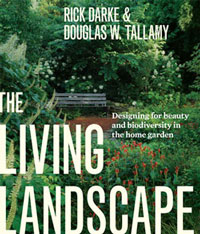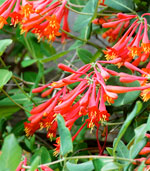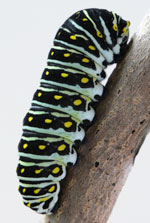 Summer is the time for the traditional Wild Ones "Show Me, Help Me" tours. The "Show Me" part means that these landscapes will show tour guests some ways to use native plants and natural landscapes in various settings. The "Help Me" part means that the host has an opportunity to ask the tour guests for help with a landscaping dilemma, getting a chance to tap into the variety of experiences and knowledge the guests have. Our tours each have a unique mix of "Show Me" and "Help Me," but they're all interesting and worthwhile. As with our meetings, the Show Me, Help Me tours are free and open to the public. Upcoming tours
My habitat garden - Because of space limitations, for my tours please RSVP and I'll send directions.Fri. June 13 at 6 pm - My habitat garden (and John's edible garden, if you're interested) Sat. June 14 at 9 am - My habitat garden (only) Sun. June 22 at 2:30 pm at the Zen Center 266 W. Seneca Turnpike Syracuse Catherine Landis of SUNY-ESF will be our tour guide. The Zen Center has 6 acres along Onondaga Creek in the Valley section of Syracuse. The property has a rain garden, a small woodland, and various other gardens. They've added many native and/or edible plants over the years in an effort to restore the woodland and other areas for wildlife and people. Species include black walnut, basswood, white pine, black raspberry (volunteers!), pawpaw, peach, chokecherry, bur oak, sugar maple, hazelnut, maidenhair fern, wild ginger, mayapple, cohosh and others. Tour guests' perspectives on the suite of challenges as well as opportunities for this centrally located urban property are welcome! There are lots of weeds, and invasives like Norway maple and buckthorn. Sat. July 12 at 10 am Show Me after Help Me TourLast year, we enjoyed a Show Me Help Me tour of Soule Leiter's landscape. There was a lot of "Show Me" since Soule has been working on her landscape for a number of years, but there was some "Help Me," too, as Soule asked for some suggestions for various spots. She took action on the tour guests' suggestions and has invited us back to see the results! RSVP to Soule and she'll send directions. We hope you can attend at least one tour to see habitat gardening with native plants in action! Janet Allen, President, HGCNY
|
 |
 |
|
OOPS! (But even better than "How-To")
|
 Just Released: The "How to" sequel to Tallamy's Bringing Nature Home
So this is how I began last issue's story about Tallamy's and Darke's new book The Living Landscape: Designing for Beauty and Biodiversity in the Home Garden.OOPS!I wrote that heading before I had gotten my copy of the book. Now that I have had it for a couple of days, I find that at the end of the introduction, the authors note explicitly, "It is not a how-to book."
They continue: "Rather it aims to provide readers with inspiration and strategies for making and maintaining truly living landscapes -- gardens that are full of life and truly vital to both human needs and the needs of local and regional wildlife communities." I've haven't been able to delve deeply into the book yet, but what I've seen so far shows that it indeed offers both inspiration as well as solid strategies. Years ago, when Tallamy wrote his first book, his ideas were new and different; now they seem to just be common sense (at least to us Wild Ones!) This book extends the ideas presented in Tallamy's first book and I think they will again alter our thinking about our landscapes. And hopefully, these ideas and strategies will soon sound like common sense not just to Wild Ones, but to everyone. A central theme of the book is that it is about connection of humans and nature rather the traditional (and current) idea of Man as separate from Nature. As Rick Darke ends his introduction to the book: "No other species on Earth is as influential as ours is, yet we are part of it all, connected to it all. Our actions have far-reaching consequences and if we're thoughtful, most of them can be good ones. Making a garden and living it it is a great way to practice the art of ethical, functional design. A well-made garden should be full of life, human and otherwise, providing infinite, daily opportunities to experience that glorious multiplicity of things and living processes."
|
 |
 |
|
2014 Native Plant Shopping Guide
|
Our FREE guide is ready for download!
 What question do we get asked most often? Where can I find native plants. Now you'll know! What question do we get asked most often? Where can I find native plants. Now you'll know!
Our 2014 Guide has the same general format as our previous Guides with a few new codes:
- F indicates Pesticide-Free plants
- BB indicate plants especially good for bumble bees. Both qualities are important.
Click on the photo above or HERE to download the entire Guide as one .pdf file.
OR you can download any or all of the parts separately for printing.
Here are the THREE PARTS of this guide:
If your computer downloads the files, but you don't know where they are, look in your browser settings to find your Downloads folder.
Still having trouble? Contact us and we'll email the .pdf file to you directly.
The Introduction section
Whether or not you print it out, please read the Introduction for Shopping Tips, contact information for the vendors and other helpful information.
We recommend that you CALL AHEAD before you set out on your shopping trip! Confirm the hours the nurseries are open and confirm that your selected plants are currently in stock. What is available in May, for example, may not be available in July. Call ahead to avoid disappointments and wasted gas!
Thank you for patronizing our local native plant nurseries. Supporting these nurseries is an important way to grow the native plant movement.
|
 |
 |
 |
|
|
|
Start planning for our HGCNY fall plant sale
|
 | Native coral honeysuckle
(Lonicera sempervirens) |
It's not too early to starting thinking about our fall plant sale.
Here are two ways you can help:
1) Think about which plants you would like to purchase at our sale. We'll try to have them available if we find a source. Email John with your requests. 2) As you observe your plantings this spring and summer, note which plants you'd like to donate to our sale. Consider potting them up early so they're established in their pots in time for our sale on Sept. 13. Our plant sale profits fund this newsletter and other HGCNY activities.
|
 | | Black swallowtail caterpillar |
Sat. June 21, 12:00 pm:
Creating a Monarch Waystation and a Butterfly-Friendly Landscape
by Janet Allen
Northern Onondaga Library at Cicero 8686 Knowledge Ln. Cicero.
FREE and open to the public.
|
|
Central New York Land Trust Plant Sale
Sat. June 21,
11am - 4pm
|
Sycamore Hill Gardens 2130 Old Seneca Turnpike, Marcellus. All proceeds benefit Central New York Land Trust in its work to extend protection to important habitat and natural areas in Central New York and to provide proper stewardship for the 2,836 acres it owns.
|
Since HGCNY is a chapter of the national organization Wild Ones, when you become a member of Wild Ones, you're automatically a member of HGCNY, too. And since Wild Ones is an official not-for-profit, your membership is tax-deductible.
It's easy to become a member, receive the bimonthly Wild Ones Journal, and support our mission.
|
As more of us participate on our Facebook page at www.facebook.com/hgcny, this will become a useful resource for asking (and answering!) local HGCNYers' questions about habitat gardening.
|
|
Our Habitat Garden website
|
 Visit Our Habitat Garden website for information on providing habitat, earth-friendly gardening practices, plants, and various creatures here in Central New York. |
Visit Our Edible Garden website to see an example of a local vegetable and fruit garden. An edible garden is a perfect complement to your habitat garden.
|
|
 |
|